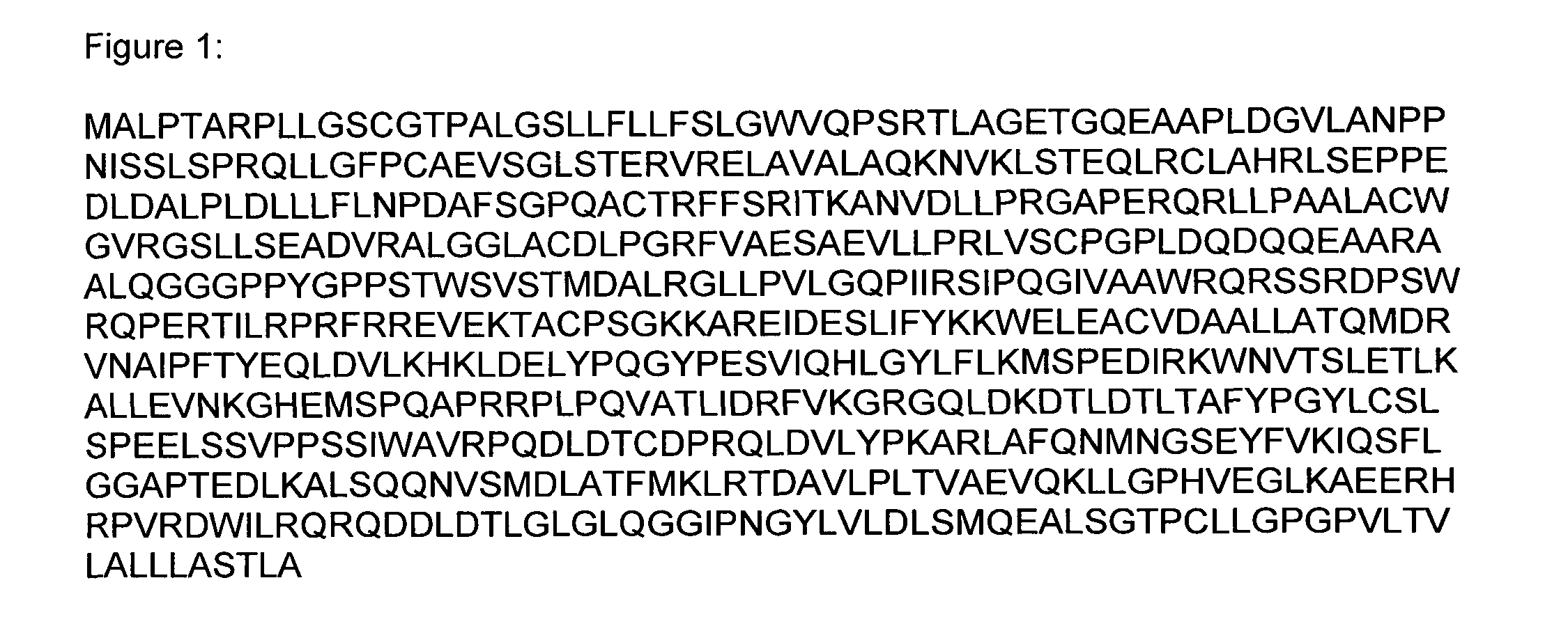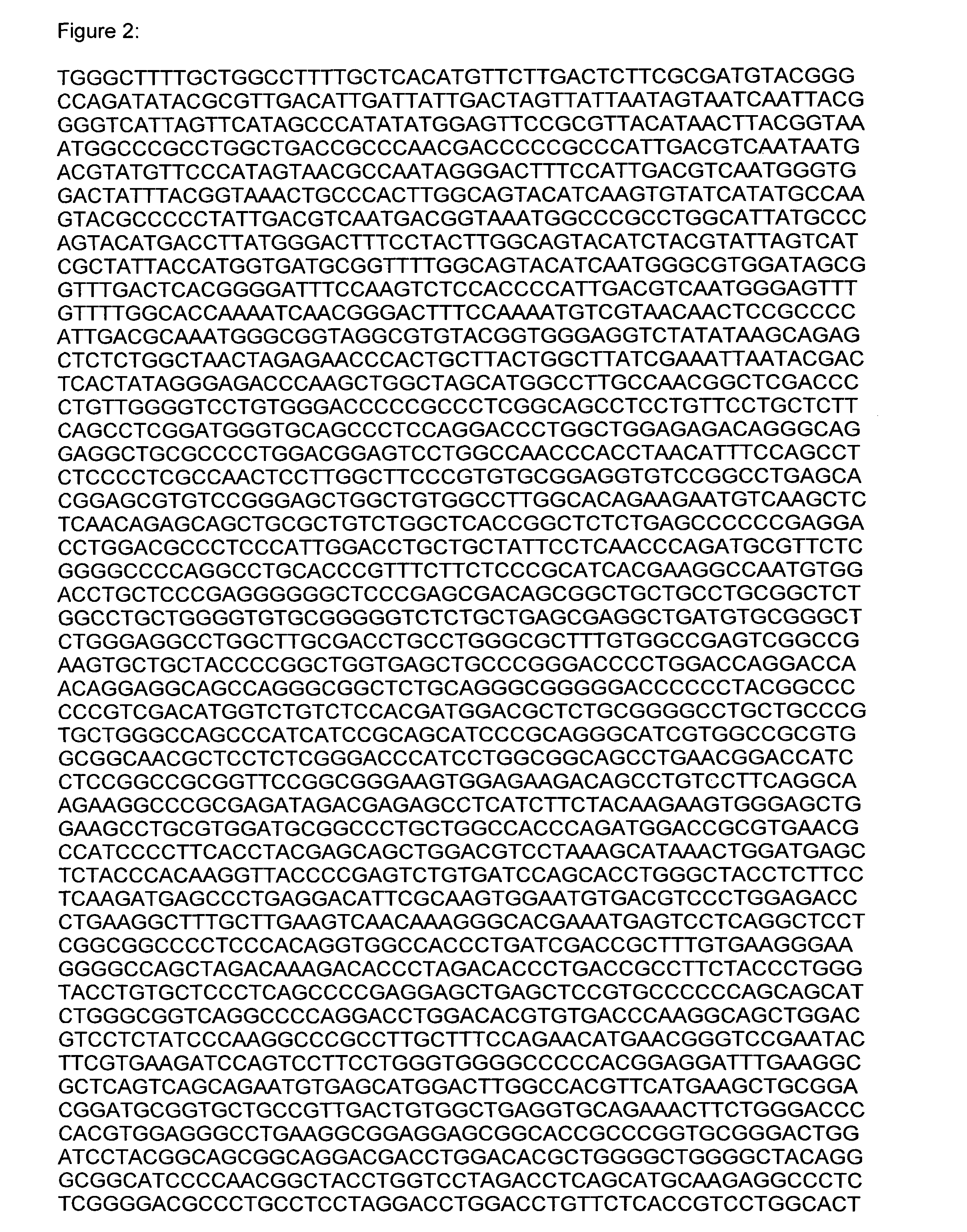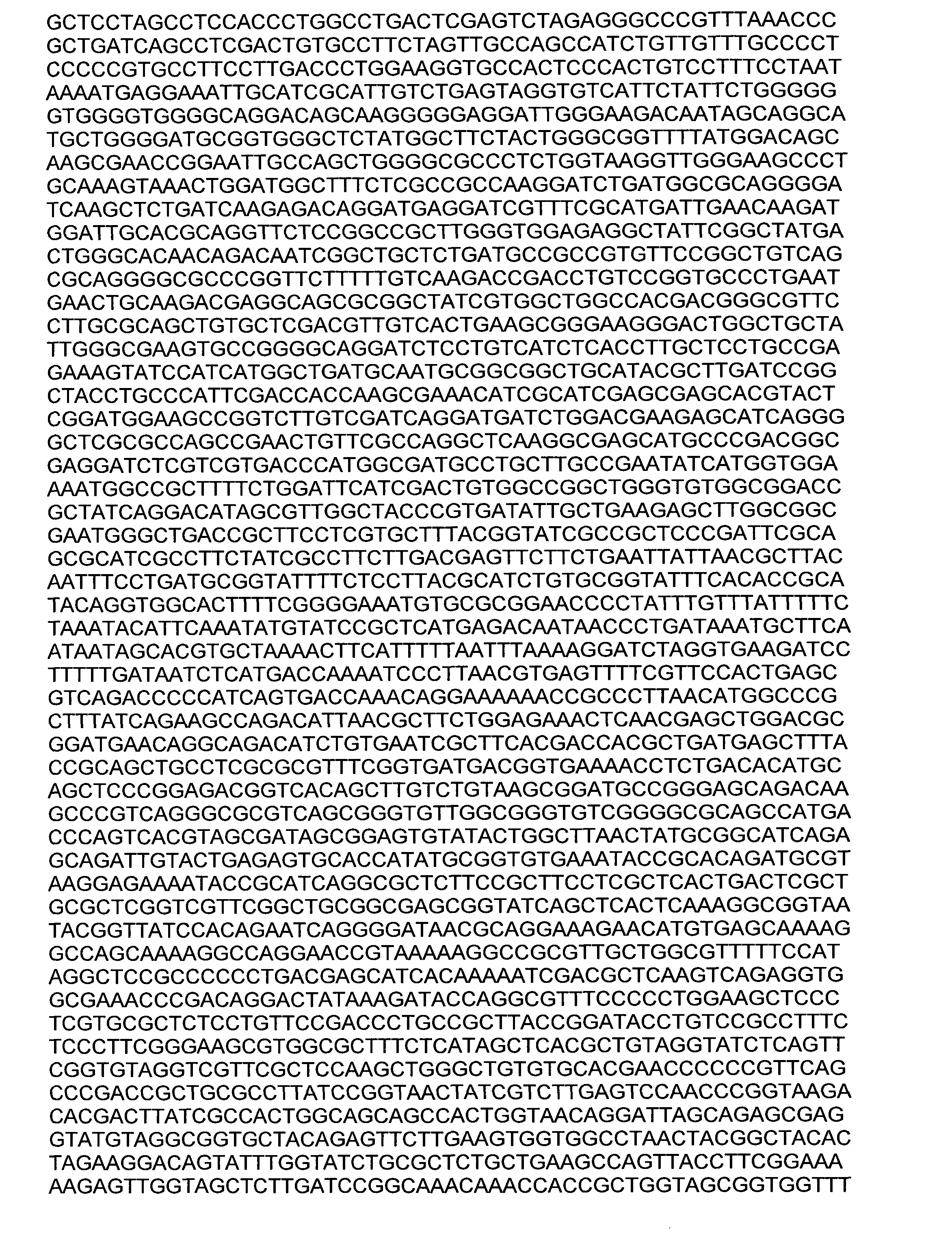Novel msln targeting DNA vaccine for cancer immunotherapy
a cancer immunotherapy and dna technology, applied in the field of attenuated mutant strains of salmonella, can solve the problems of major limitations of previously available msln vaccine administration via intravenous route and associated side effects, and achieve the effect of improving the treatment options for cancer patients
- Summary
- Abstract
- Description
- Claims
- Application Information
AI Technical Summary
Benefits of technology
Problems solved by technology
Method used
Image
Examples
example 1
Preparation of Recombinant Plasmids pVAX10.mMSLN and pVAX10.hMSLN
[0098]Human MSLN (1893 bp, MSLN sequence according to NCBI reference sequence NM_013404.4) and murine MSLN (1878 bp, MSLN sequence according to NCBI reference sequence NM_018857.1) were cloned into the pVAX10 backbone derived of pVAX10.VR2-1. MSLN DNA fragments were generated by double-strand gene synthesis, where oligonucleotides were linked together using a thermostable ligase. The obtained ligation products were amplified by PCR. Upon amplification, the in vitro synthesized DNA fragments of human and murine MSLN were cloned into the pVAX10 backbone via NheI / XhoI (the VEGFR-2 coding region of recombinant plasmid pVAX10.VR2-1 was replaced by human or murine MSLN). For quality control, the entire plasmids were sequenced and aligned to the respective reference sequence after transformation into E. coli. Both sequences proved to be free of errors. The resulting plasmids were designated pVAX10.mMSLN and pVAX10.hMSLN.
example 2
Transformation of Attenuated Salmonella Strains with the Recombinant Plasmids
[0099]S. typhi Ty 21a was transformed with plasmid pVAX10.hMSLN. S. typhimurium SL7207 (aroA−) was transformed with plasmid pVAX10.mMSLN. The transformation was performed by electroporation.
Preparation of Competent Salmonella Cells:
[0100]Glycerol cultures of S. typhi Ty21a and S. typhimurium SL7207 were inoculated on LB plates (animal component free [ACF] soy peptone). The plates were incubated at 37° C. overnight. One colony each was used for overnight-liquid-preculture. 3 ml LB medium (ACF soy peptone) inoculated with one colony each was incubated at 37° C. and 180 rpm overnight. To prepare competent cells, 2×300 ml of LB medium (ACF soy peptone) were inoculated with 3 ml of the overnight culture and incubated at 37° C. and 180 rpm up to an OD600 of about 0.5. The cultures were then put on ice for 10 minutes. Subsequently, the bacteria were centrifuged for 10 minutes at 3000×g at 4° C. and each pellet was...
example 3
Assessing Immunekinetics of VXM04m in Healthy C57Bl / 6 Mice
[0105]The kinetics of specific immune activation against murine Mesothelin in healthy C57Bl / 6 mice was evaluated by Pentamer analysis and ELISpot. As negative control, a vector control group (receiving VXM04m-empty=Salmonella typhimurium containing no expression plasmid) was included in the study setup to discriminate the desired immunologic effect from any unspecific background stimulation caused by Salmonella empty vector. Immune monitoring was carried out at D5, D7, D10, D14 and D21 post vaccination after 4-fold every second day vaccination with VXM04m and VXM04m-empty (each 1010 CFU / dose).
1. Animal Maintenance
[0106]52 healthy female C57Bl / 6 mice, 6 weeks old at reception, were obtained from JANVIER (Le Genest St Isle, France) and observed for 7 days in a specific-pathogen-free (SPF) animal care unit before starting the procedure. Animals were maintained in rooms under controlled conditions of temperature (23±2° C.), humid...
PUM
| Property | Measurement | Unit |
|---|---|---|
| thickness | aaaaa | aaaaa |
| concentration | aaaaa | aaaaa |
| temperature | aaaaa | aaaaa |
Abstract
Description
Claims
Application Information
 Login to View More
Login to View More - R&D
- Intellectual Property
- Life Sciences
- Materials
- Tech Scout
- Unparalleled Data Quality
- Higher Quality Content
- 60% Fewer Hallucinations
Browse by: Latest US Patents, China's latest patents, Technical Efficacy Thesaurus, Application Domain, Technology Topic, Popular Technical Reports.
© 2025 PatSnap. All rights reserved.Legal|Privacy policy|Modern Slavery Act Transparency Statement|Sitemap|About US| Contact US: help@patsnap.com



